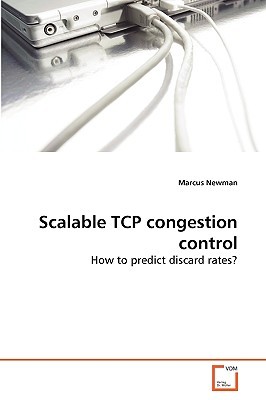
- We will send in 10–14 business days.
- Author: Marcus Newman
- Publisher: VDM Verlag
- ISBN-10: 3639045521
- ISBN-13: 9783639045529
- Format: 15.2 x 22.9 x 0.5 cm, minkšti viršeliai
- Language: English
- SAVE -10% with code: EXTRA
Reviews
Description
Routers in IP packet switched networks signal congestion to senders by discarding packets. Such discards, as a side-effect, are often the key factor determining the quality of network service perceived by users. For this reason network designers need techniques to explain, predict, and control the packet discard rate. This thesis explains the discards rate for TCP traffic in terms of the interaction between load and capacity. The key insights are that load should be measured as the number of senders actively completing for a bottleneck link, and capacity as the total network buffering available to those senders. The thesis shows how to predict discard rates using these measures. It also propose a new queuing method that can limit the discard rate over a wide range of loads.
EXTRA 10 % discount with code: EXTRA
The promotion ends in 23d.14:23:41
The discount code is valid when purchasing from 10 €. Discounts do not stack.
- Author: Marcus Newman
- Publisher: VDM Verlag
- ISBN-10: 3639045521
- ISBN-13: 9783639045529
- Format: 15.2 x 22.9 x 0.5 cm, minkšti viršeliai
- Language: English English
Routers in IP packet switched networks signal congestion to senders by discarding packets. Such discards, as a side-effect, are often the key factor determining the quality of network service perceived by users. For this reason network designers need techniques to explain, predict, and control the packet discard rate. This thesis explains the discards rate for TCP traffic in terms of the interaction between load and capacity. The key insights are that load should be measured as the number of senders actively completing for a bottleneck link, and capacity as the total network buffering available to those senders. The thesis shows how to predict discard rates using these measures. It also propose a new queuing method that can limit the discard rate over a wide range of loads.


Reviews